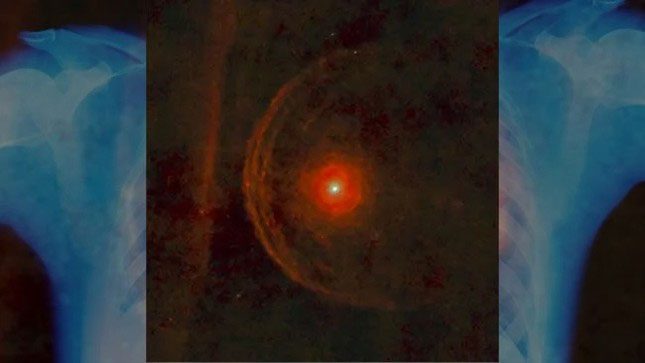Next week, a rare celestial event will occur as an asteroid passes in front of the red supergiant star Betelgeuse in the constellation Orion.

The red supergiant star Betelgeuse, seen here surrounded by a cloud of dust, is the 10th brightest star in the sky. (Image: ESA/Herschel/PACS/L. Decin).
Betelgeuse is the 10th brightest star in the night sky and will disappear for a brief moment on December 12 when asteroid 319 Leona seemingly passes directly in front of it from our perspective on Earth.
This 12-second event will provide a valuable opportunity for astronomers to create a surface map of the giant star, which has exhibited some unusual behavior recently.
It is highly unusual for one of the brightest stars in the night sky to be obscured or “eclipsed” by an asteroid. While the smaller asteroid could create a “ring of fire” effect during the eclipse at Betelgeuse, very few sky observers will be situated perfectly to witness it.
In addition to being a fleeting event, the eclipse will only be visible from a narrow path extending from Asia to southern Europe, Florida, and eastern Mexico.
The International Mystical Time Association has a special page dedicated to this event, which includes a downloadable Google Earth file showing the full path. Viewers will be able to see the eclipse without the need for binoculars or telescopes.
Anyone can watch this event through a live stream organized by the Virtual Telescope Project in Italy. The live stream is expected to begin at 8:00 AM on December 12, although this time may vary by a few minutes as the orbit of 319 Leona is refined.




















































